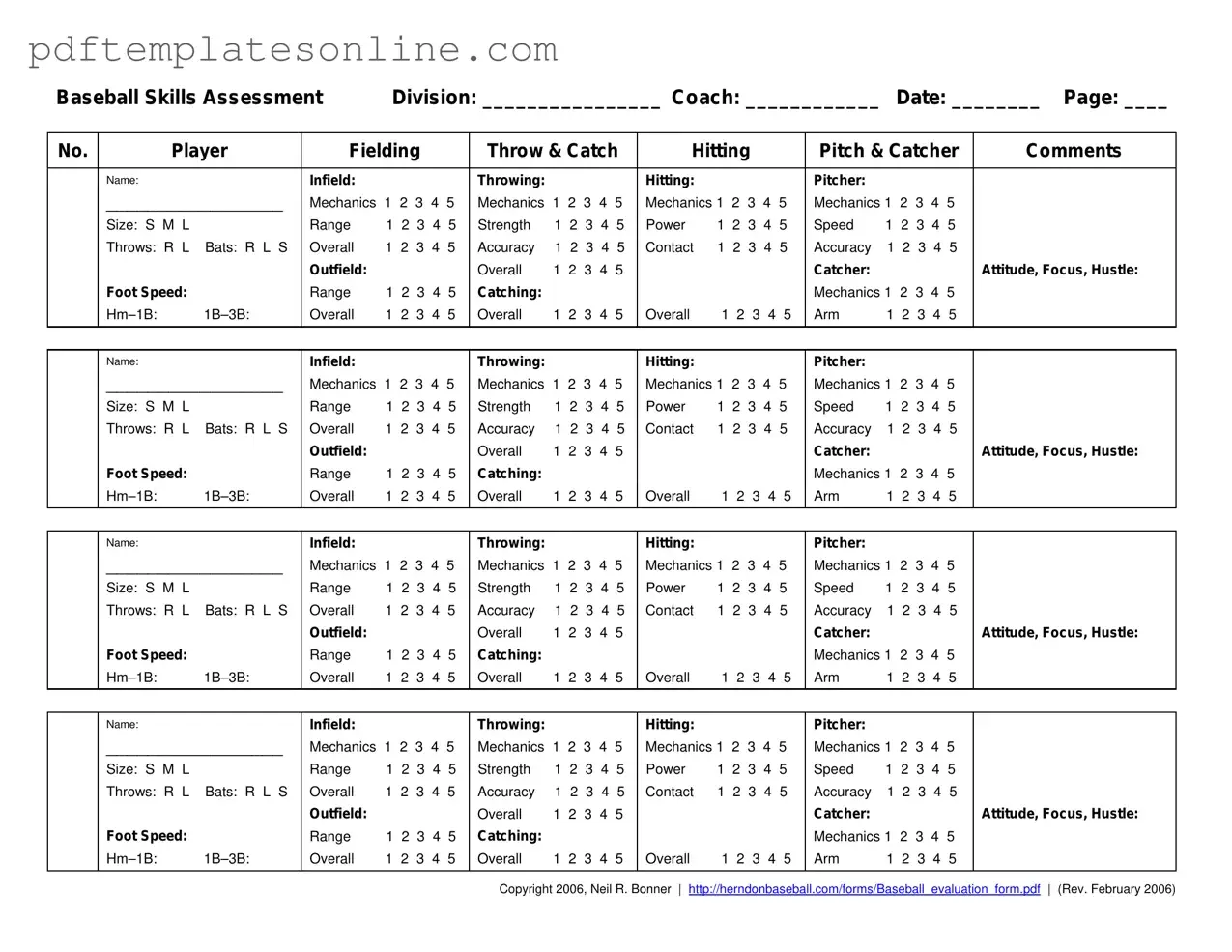Filling out the Baseball Assessment form can be straightforward, but many people make common mistakes that can affect the evaluation process. One frequent error is failing to fill in the basic information completely. Coaches need to know the player's name, division, and date to ensure proper identification and record-keeping. Omitting this information can lead to confusion and miscommunication later.
Another mistake is not using the correct scoring scale. The assessment uses a five-point scale, where each score represents a different level of skill. Some evaluators may overlook this and assign scores randomly or inconsistently. This inconsistency can skew the overall evaluation, making it difficult to compare players fairly.
Many people also forget to provide specific comments in the designated sections. Comments are crucial as they give context to the scores. They can highlight a player’s strengths or areas for improvement. Skipping this part can leave coaches without valuable insights into a player’s performance.
In addition, evaluators often neglect to assess all categories. The form includes various skills like fielding, hitting, and pitching. Some may focus only on one area, leading to an incomplete picture of the player's abilities. Every skill is important, and a thorough assessment is necessary for accurate evaluations.
Another common oversight is not being objective. Evaluators may let personal biases influence their scoring. It’s essential to remain impartial and assess each player based on their actual performance. Fair evaluations help ensure that the best players are selected for the team.
Additionally, some people fail to consider the importance of attitude and hustle. These qualities can significantly impact a player's performance and team dynamics. Ignoring these aspects can lead to overlooking players who may not have the highest skill level but contribute positively to the team environment.
Lastly, many evaluators forget to double-check their work for accuracy. Simple mistakes like miscalculating scores or misspelling names can create confusion later. Taking a moment to review the completed form can save time and effort down the line.
By avoiding these common mistakes, coaches and evaluators can ensure that the Baseball Assessment form is filled out accurately and effectively, leading to better team selections and player development.
